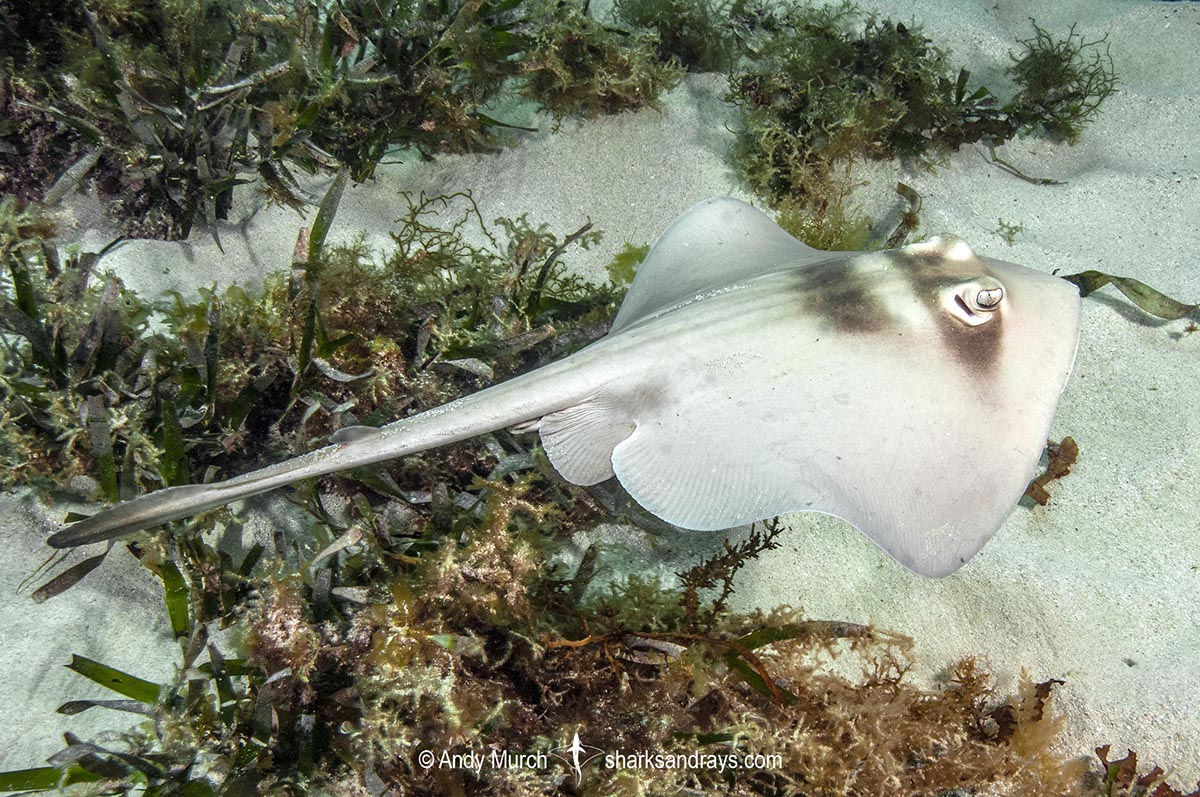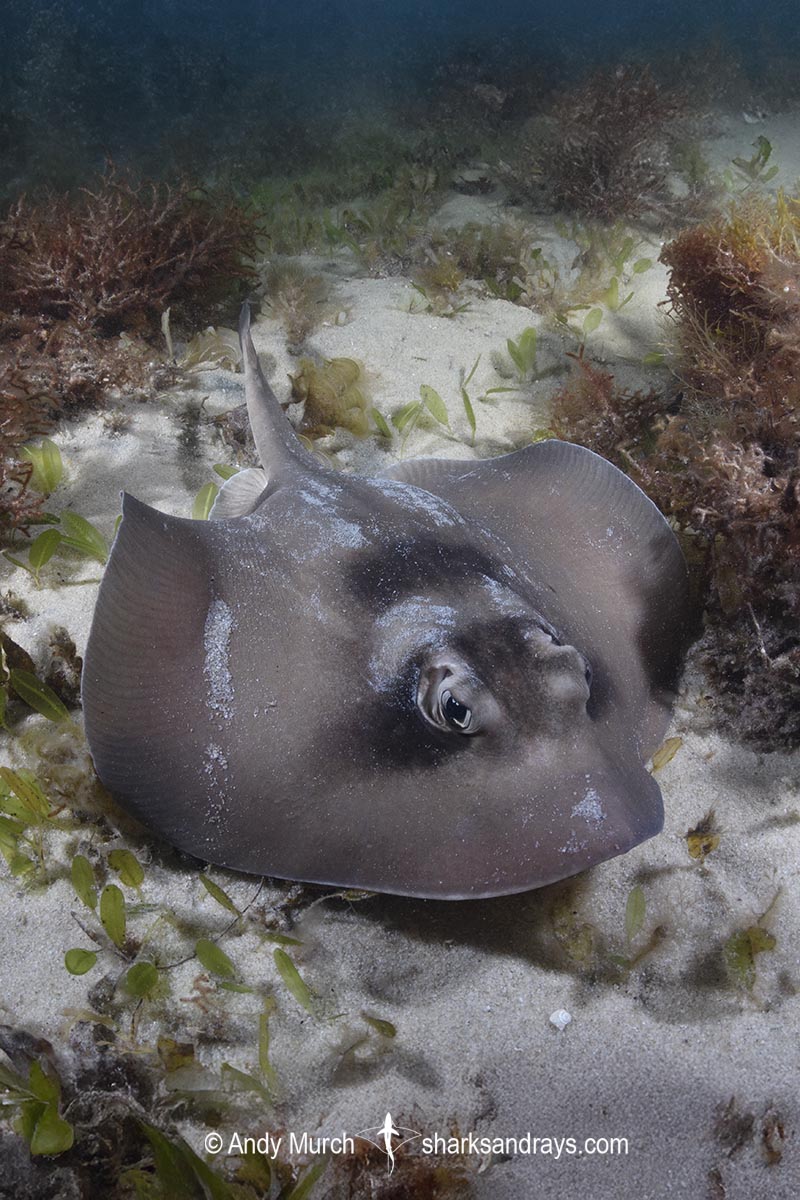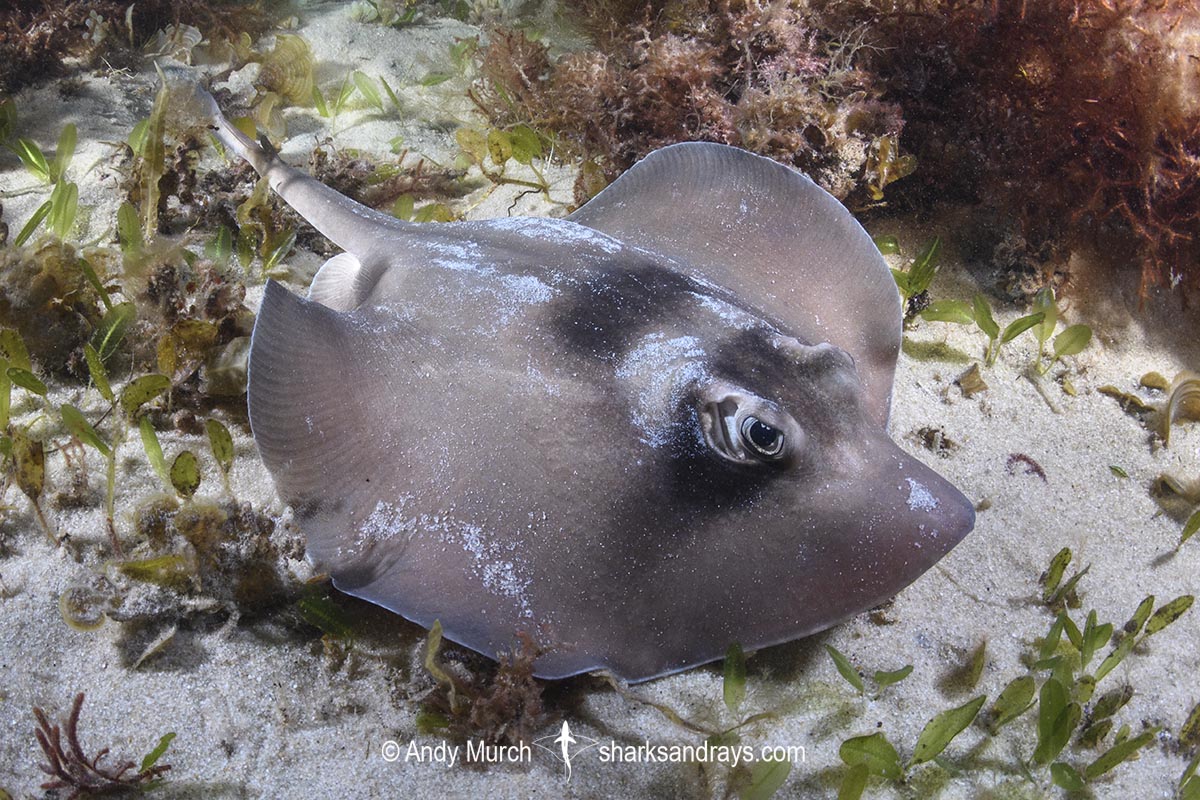Common names
Striped stingaree.
Binomial
Trygonoptera personata.
Synonyms
Trygonoptera personalis.
Identification
A medium-sized stingaree with a sub-circular or rounded kite-shaped disc that is equal to or slightly longer than wide. Snout obtusely angular, with a very small lobe at tip. Anterior margins of disc slightly convex, apices broadly rounded. Disc completely smooth.
Eyes medium-sized; orbit length 21-28% of snout length. Spiracle origin below mid-eye. Mouth small. 3-4 oral papillae on mouth floor. Nasal curtain skirt shaped, not extended into a distinct lobe, posterior margin heavily fringed. Broad lateral-posterior lobe present on each nostril.
Tail 0.67-0.86 x disc length, slightly depressed or oval in cross-section. Moderately large dorsal fin present anterior to caudal sting. Caudal fin relatively long.
Colour
Dorsum grey, brownish-grey, or pale with a dark brownish mask across eyes, and dark brownish bar across nape. Caudal fin dark. Ventrum mostly white or yellowish, sometimes with a dusky margin.
Size
Maximum length 55cm. Length at birth approximately 20cm.
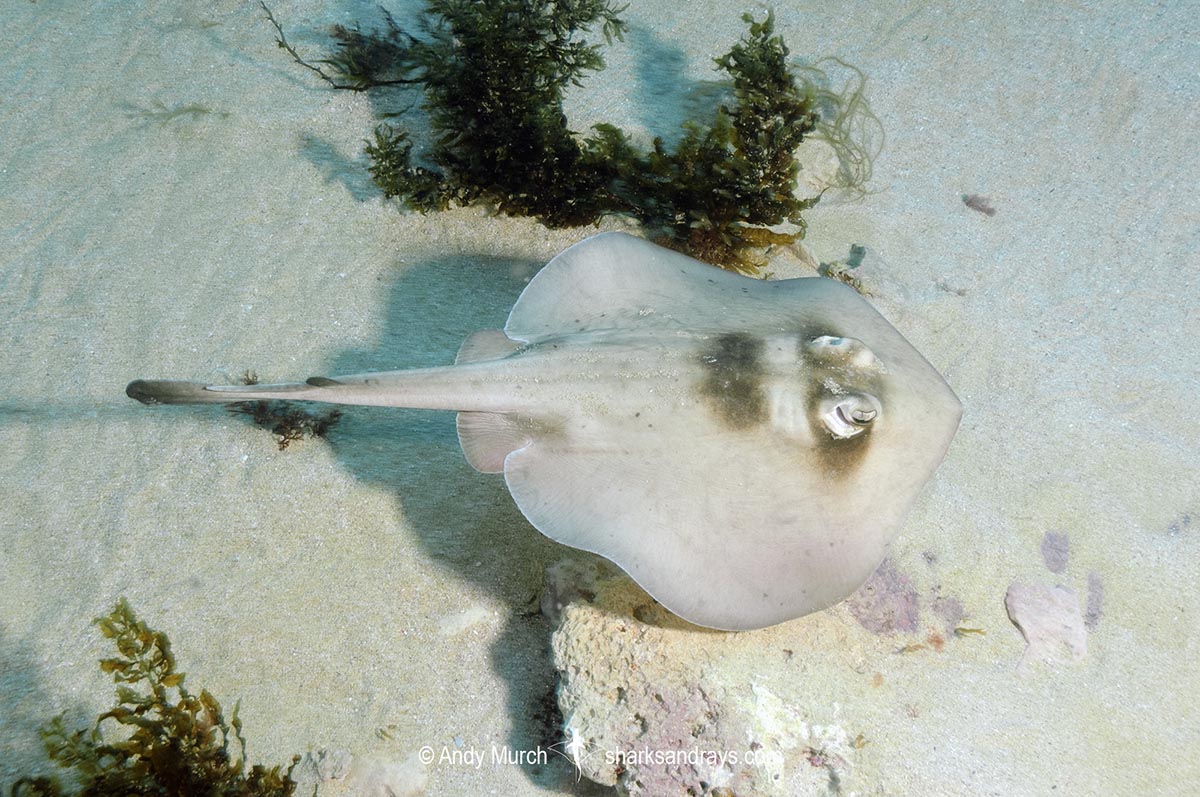
Conservation Status
LEAST CONCERN
The population trend for the masked stingaree is unknown, but it is probably stable due to minimal fishing effort within its range in Western Australia.
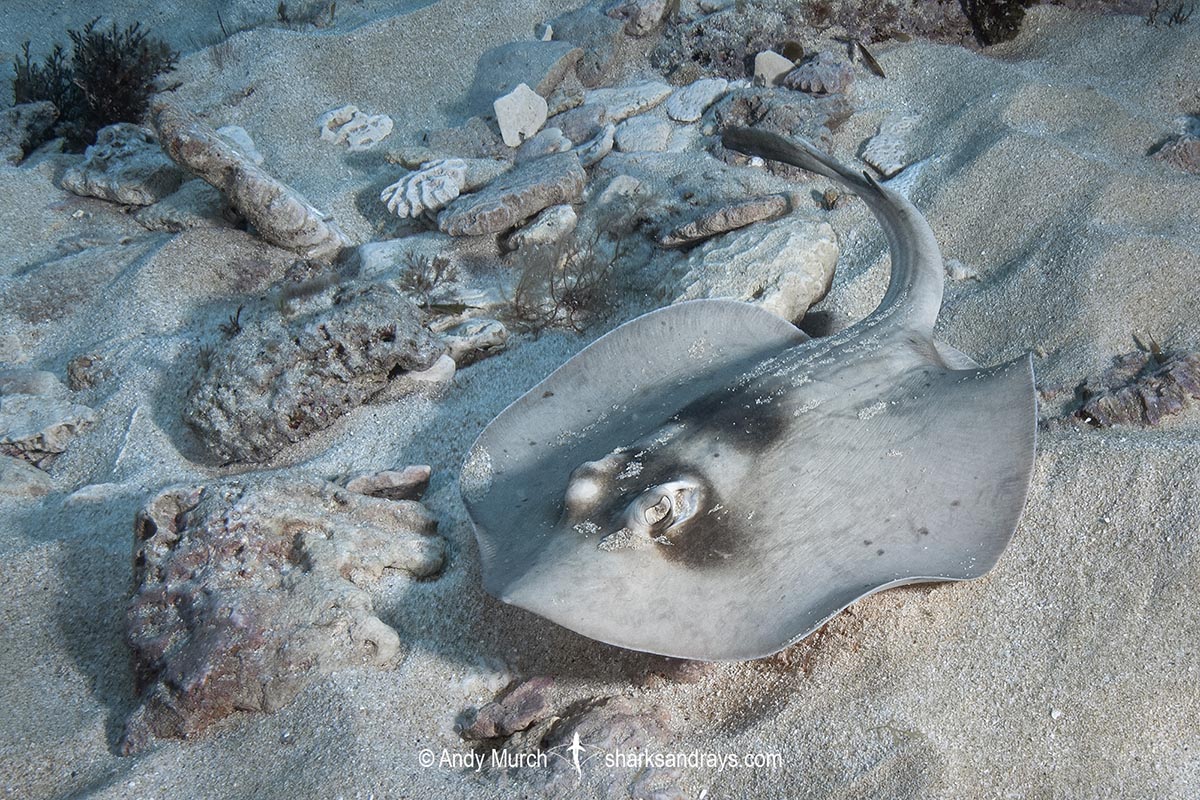
Habitat
Subtropical/temperate seas. Found on sandy substrates and seagrass beds. Shallow bays to At least 115m.
Distribution
Southeast Indian Ocean. Endemic to Southwestern Australia between Geographe Bay and Shark Bay.
Reproduction
Viviparous, probably with trophodermic nutrition. Litter size 1-2. Gestation 10-12 months.
Diet
Feeds mostly on polychaete worms and crustaceans.
Behavior
Poorly known.
Reaction to divers
Skittish but approachable with non-threatening movements.
Diving logistics
Masked stingarees are fairly common on sandy substrates adjacent to rocky reefs at Rottnest Island near Perth, WA.


